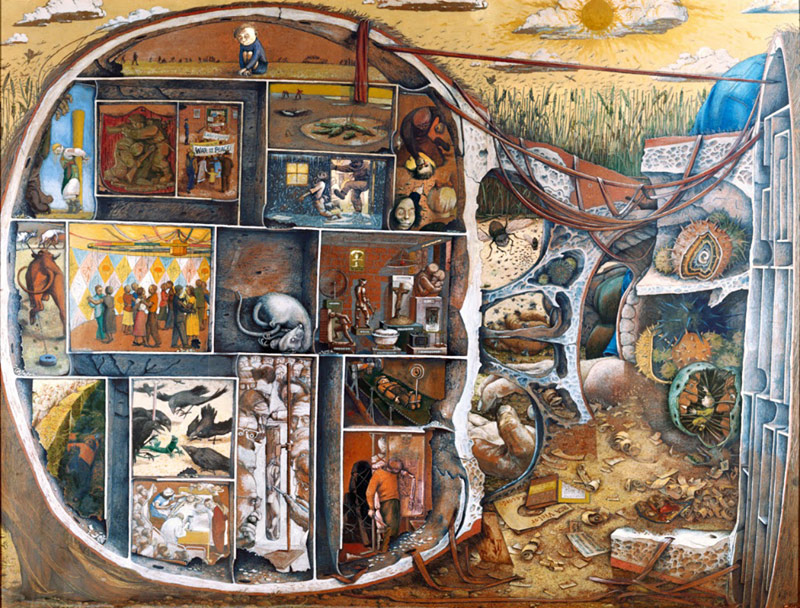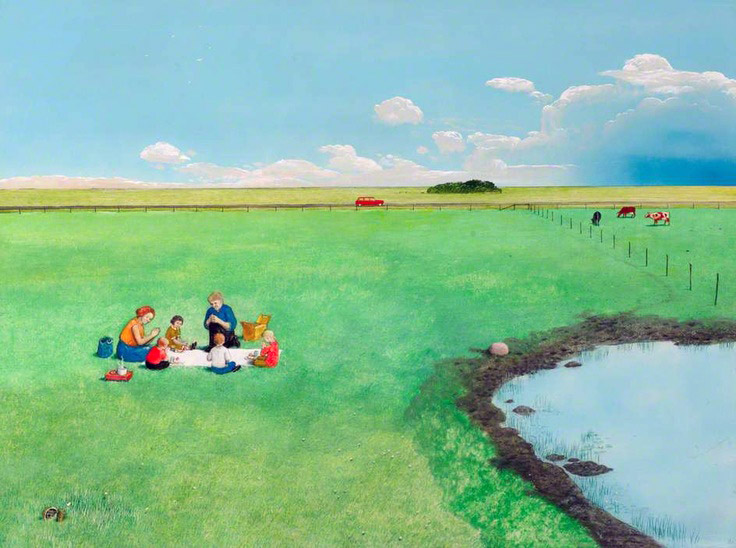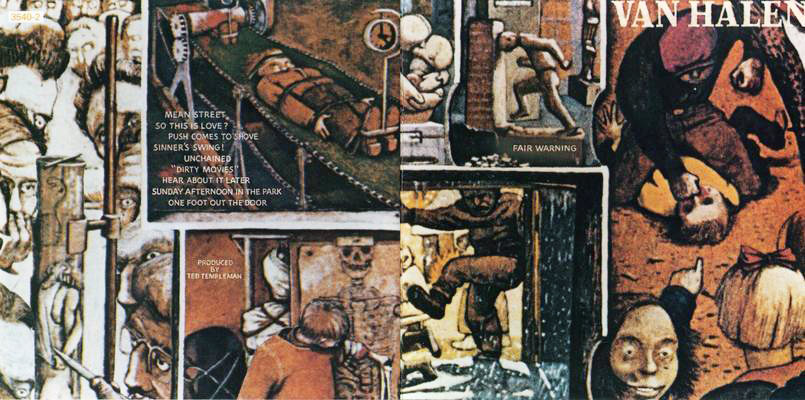 When Van Halen fans first listened to a copy of the Fair Warning album in the early eighties, few could miss the fact that the band’s sunny subject matter had turned to a more somber and threatened perspective. This tone was set by the album’s opening track “Mean Street,”and was continued through a song-cycle filled with dark subject matter and disillusionment. The overall theme extended to the record’s haunting cover art, which depicted some poor guying getting pummeled in the face, along with other scenes of aggression, pain and torture. The cover remains as stirring and enigmatic as it was upon the day of the record’s release April 29, 1981. Yet few VH fans know the story of that album art, which has a background as disturbing as the content of the songs within it.
When Van Halen fans first listened to a copy of the Fair Warning album in the early eighties, few could miss the fact that the band’s sunny subject matter had turned to a more somber and threatened perspective. This tone was set by the album’s opening track “Mean Street,”and was continued through a song-cycle filled with dark subject matter and disillusionment. The overall theme extended to the record’s haunting cover art, which depicted some poor guying getting pummeled in the face, along with other scenes of aggression, pain and torture. The cover remains as stirring and enigmatic as it was upon the day of the record’s release April 29, 1981. Yet few VH fans know the story of that album art, which has a background as disturbing as the content of the songs within it.
The original artwork is from a grotesque painting by Canadian artist William Kurelek (1927-1977). Raised on a prairie farm in midwestern Canada, he had experienced such a brutal childhood that he had become extremely withdrawn, eventually retiring into a private world of weird fantasies. In one of these, he imagined that if he cut off the flesh of his arm (lower right chamber) he would be shocked back to human feelings. When he actually made some cuts on his arm, he was admitted to a hospital for psychiatric treatment. There, the 26 year old was given treatment for schizophrenia. Additionally, the sympathetic doctors gave Kurelek a room to pursue his artistic endeavors, a passion deemed helpful by his therapists. It was during this stay that he created a painting he called “The Maze,” a harrowing portrayal of his tortured youth in Canada during the Great Depression.

Kurelek had great difficulty talking to people. Yet when he began to paint, the images of his torment poured out with remarkable clarity. In “The Maze,” he portrayed himself lying in a field, his scull cut open to reveal the painful memories of his past and the morbid fantasies of his present state. In the strange self portrait, the artist’s open skull is divided like the maze of a psychologist uses to observe a rat’s behavior. In the central compartment lies the rat, the artist himself, exhausted in defeat after entering each chamber. The various chambers depict bitter incidents in the artist’s childhood, his disillusion (The “Museum of Hopelessness”) and his cynicism (dancers seen as puppets). His doctors are seen in one chamber as crows tormenting a helpless lizard while in another chamber the scrutinize the artist in a test tube.
Once the imagery of his illness emerged, he could step back from the canvas and talk to his doctor about his torment. In time he recovered and married. His subsequent paintings had a much less morbid outlook.

The vividly brutal imagery contained in “The Maze” is remarkably different from the paintings sequel, entitled “Out Of The Maze”, painted after the artist’s recovery. This second painting reflects a pastoral countryside, as well as an artist no longer as deeply disturbed, with his wife and children enjoying a happy family picnic. However, all is not as idyllic as a first glance might suggest. An empty, open skull in the bottom left hand corner is a reminder of the psychological prison from which the artist has escaped and the impending storm on the far right horizon hints at Kurelek’s premonition that the world was heading for a nuclear holocaust.

When the painting was used for the Fair Warning album cover, it was severely cropped and modified, ostensibly to highlight the most striking images inherent in the work. The album can best be viewed via it’s original 12″ x 12″ vinyl release, which (due to it’s size) allows a close study of the artwork not available in it’s far smaller CD counterpart. Sadly, due to price constraints at the time of the record’s release, a single sleeve album jacket was used, whereas a gatefold-type cover would have greatly enhanced the details found in the work.